Winners of Wikimedia’s international photo contest Wiki Loves Bangla 2024 (or Banglar Preme Wiki 2024) have been announced. Organized by Bangla WikiMoitree as part of the Bangla Culture and Heritage Collation Program, a collaborative effort between Wikimedia Bangladesh and West Bengal Wikimedians User Group, this month-long competition was held from 15 January to 14 February 2024. The main goal of this contest was to capture and enrich the cultural tapestry and heritage of Bengal through the art of photography. The first edition aims to encourage people to capture photos highlighting the global diversity of Bengali cuisine and put them under a free license, which can then be re-used not only in Wikipedia but everywhere by everyone. In 2024, the contest attracted significant participation with over 2,100 images of Bengali food and culture from 212 participants, reflecting the enthusiastic engagement with the initiative. This competition has substantially enriched Wikimedia Commons with a wealth of Bengali food photos, which will greatly enhance the illustration of Wikipedia articles in the future.
This year, we had three people on the jury team: food expert, professional photographers and Wikimedians, who helped us choose the best photos.
- Biswarup Ganguly (India; Documentary photographer and Wikimedian)
- Abdul Momin (Bangladesh; Photographer)
- Sumit Surai (India; Food blogger, Photographer and Wikimedian)
After a review by the organizing team and the round of jury evaluation, we have the top 10 best images for the finalist. The 1st place recipient will be awarded a prize valued at BDT 35 thousand, while the 2nd and 3rd place winners will receive BDT 25 thousand and BDT 15 thousand respectively. Furthermore, all top 10 winners, along with the participants who uploaded the highest number of photos, will be presented with certificates and souvenirs.
And we are ready to showcase them!
First place
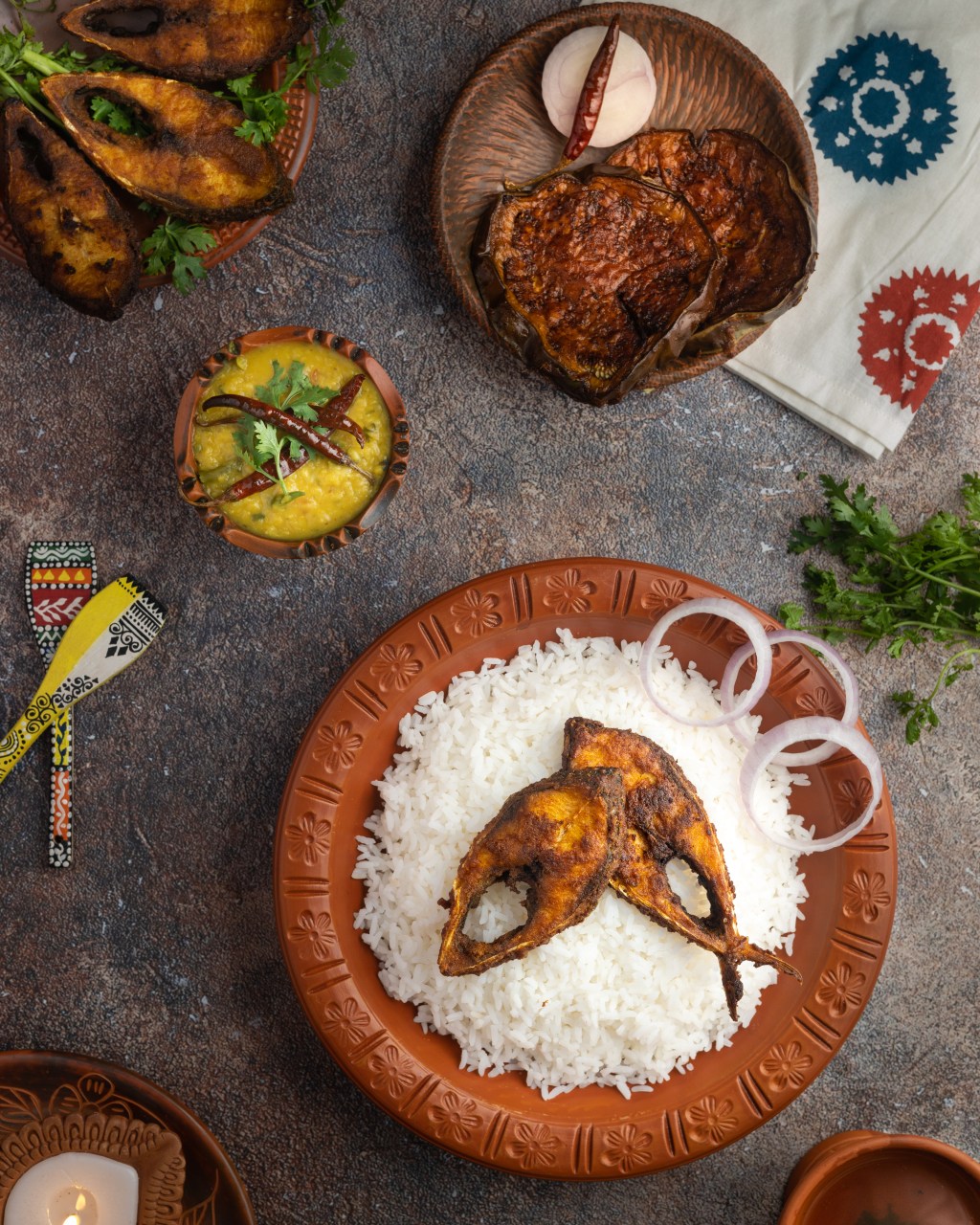
Rice and ilish fry with dal chachchori and eggplant fry is a unique combination of Bengali food habits. The proverb ‘Mache-Bhate Bangali’ (Bengali by fish and rice) captures the essence of Bengali cuisine, where fish and rice are considered staple foods and are deeply ingrained in the cultural and culinary heritage of Bengal.
Second place
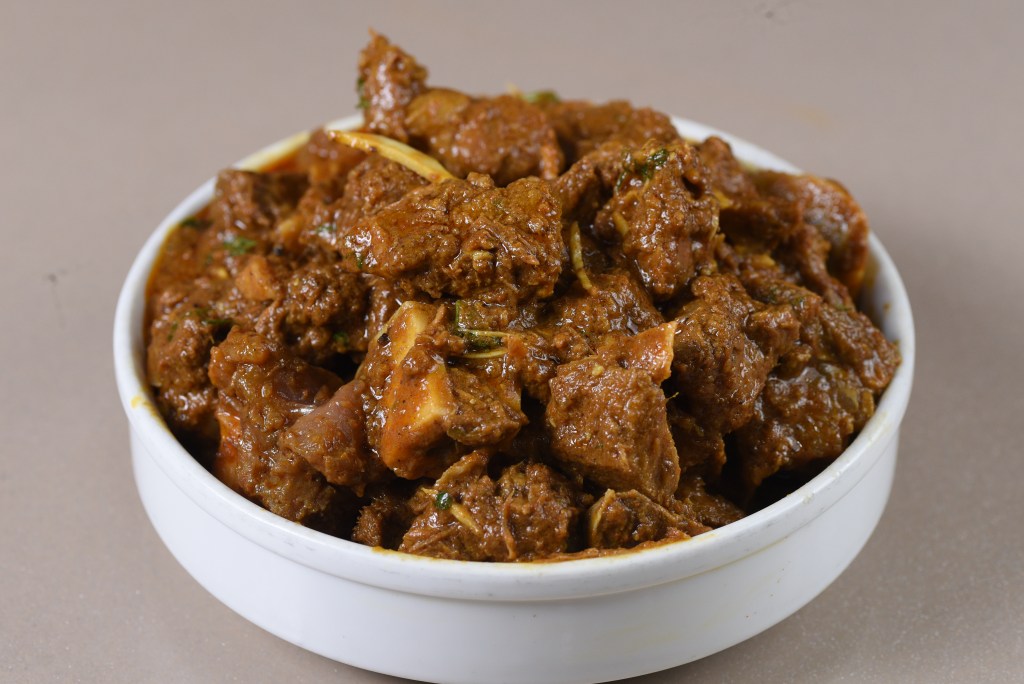
Beef bhuna is a glorious Bengali curry, easily identified by its delicious, spicy and thick sauce. It is a popular dish in Indian cuisine too, particularly in the North Indian region. It is a spicy and flavorful preparation of beef cooked with aromatic spices, onions, tomatoes, and sometimes yoghurt or cream. ‘Bhuna’ refers to the cooking method where the meat is cooked in its juices until they are reduced and the flavours are intensified.
Third place

Payesh made with date jaggery is a traditional Bengali dessert known for its rich, creamy texture and sweet flavour. It is typically prepared by simmering rice in milk and sweetening it with date jaggery, also known as ‘nolen gur’ (‘new jaggery’), which imparts a unique caramel-like taste. Traditionally cooked at night and served in the morning.
Fourth place

Momos are a type of steamed-filled dumpling in Tibetan and Nepalese cuisine that is also popular in neighbouring Bhutan, India and Bangladesh. It is usually served with a sauce known as achar (South Asian pickle) influenced by the spices and herbs used within many South Asian cuisines. It can also be cooked as soup versions known as jhol momo.
Fifth place
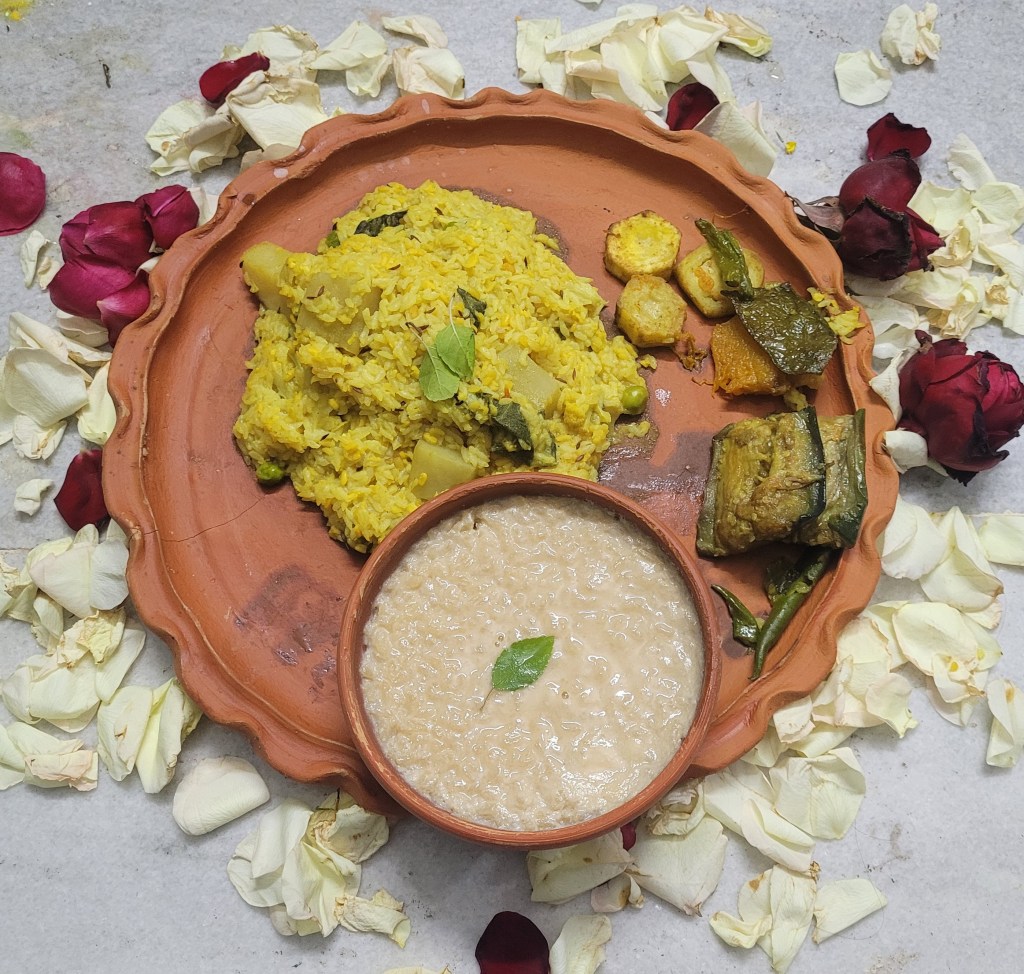
Traditional homemade Bhog Prasad. ‘Bhog’ refers to the offering made to deities in Hindu rituals and ceremonies, particularly during religious festivals and auspicious occasions. ‘Prasad’ refers to the consecrated food that is offered to the deity and then distributed to devotees as a blessing. Bhog Prasad is essentially the sacred food offered to the deity and later distributed among the devotees.
Sixth place

Imarti (alternative names include Amitti, Amriti, Emarti, Omritti etc.) is indeed a popular Indian dessert believed to have originated in the Mughal kitchens. It is made from urad dal (black gram) batter, which is fried in a circular shape and then soaked in sugar syrup. Imarti has a distinctive spiral shape and is often adorned with saffron or rose water for added flavour and aroma.
Seventh place
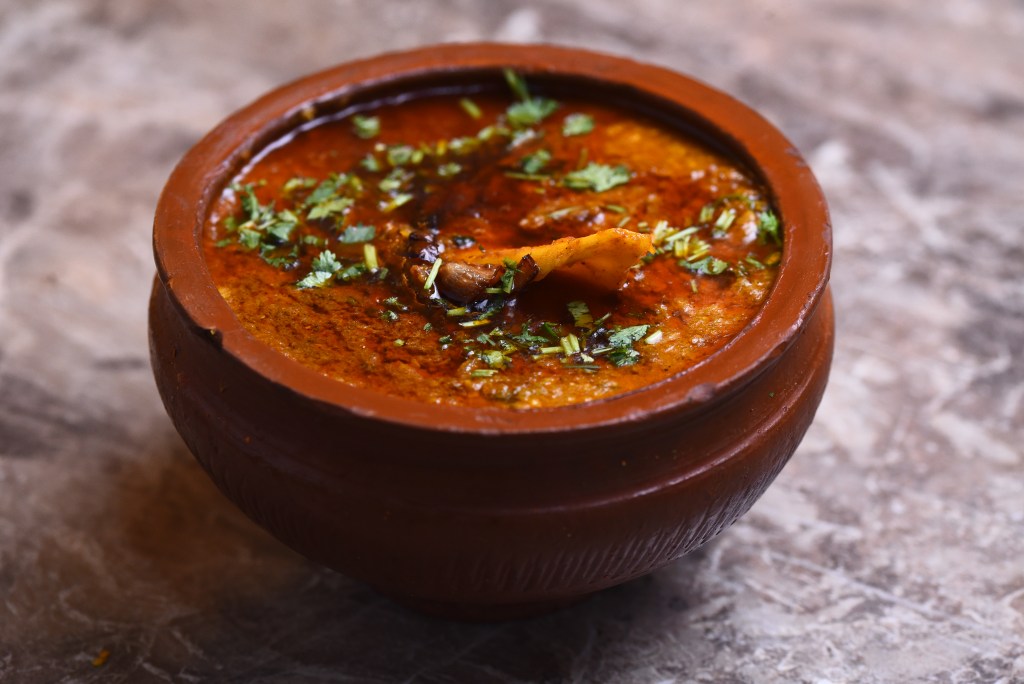
Haleem is indeed a type of stew that is popular across Central and South Asia, and the Middle East. It is a hearty and nutritious dish made from a variety of ingredients, including meat (often mutton, beef or chicken), lentils, wheat, barley, and spices. Although the dish varies from region to region.
Eighth place
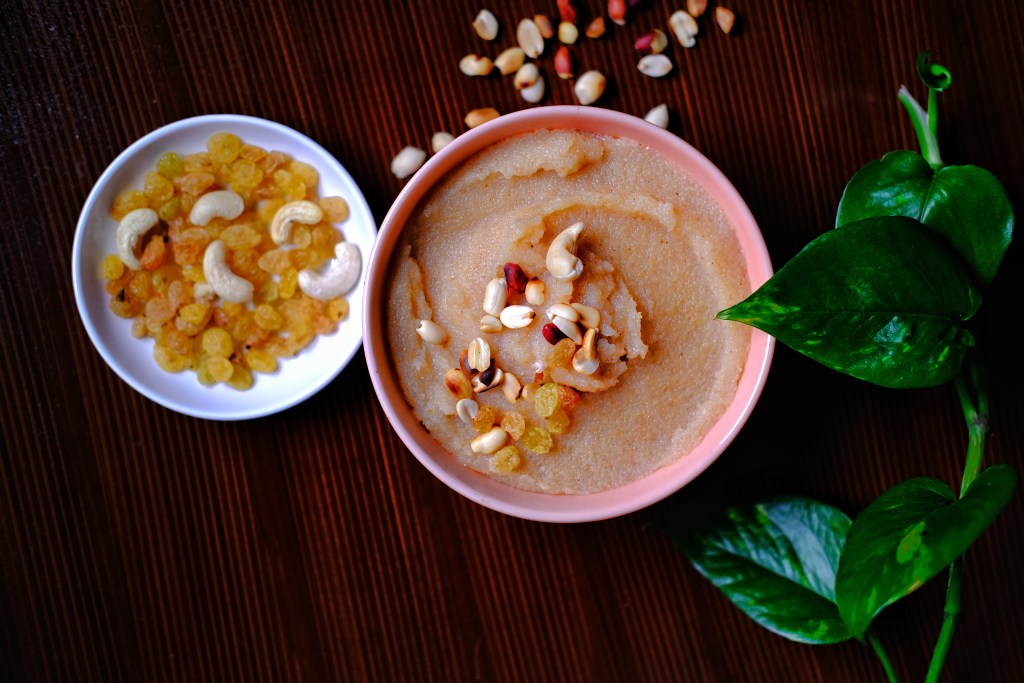
Sooji halva, also known as Semolina halva, or rava kesari, is a familiar and common sweet dish in Bengali cuisine. It is made from semolina, ghee (clarified butter), sugar, and water, along with nuts, raisins, and aromatic spices such as cardamom for flavour.
Ninth place

Sweet flour pie, also known as ‘sweet flour pancake’, is a simple, delicious and very common snack in Bengali cuisine. It is made by mixing wheat flour, milk, and sugar, and is sometimes flavoured with cardamom or saffron. The mixture is then fried on a tawa (flat griddle) over low flame until golden brown and crispy on the edges.
Tenth place
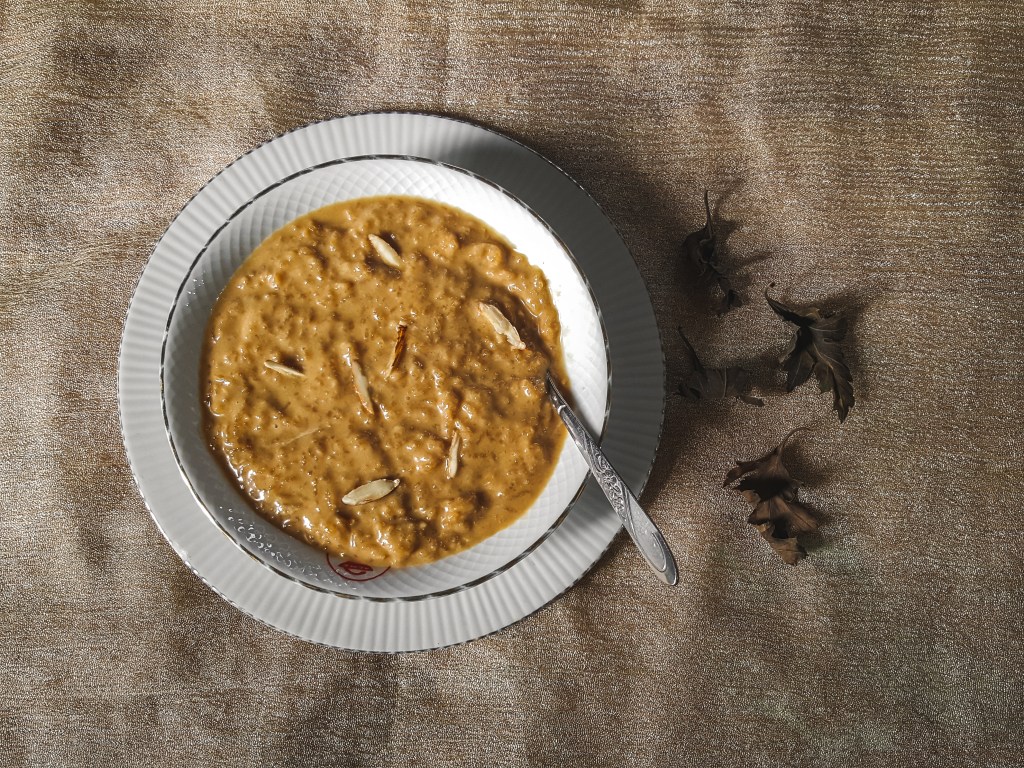
Payesh made with date jaggery, is a variation of payesh that adds a caramel-like sweetness to the dish. Usually cooked overnight and served in the morning, this payesh coagulates beautifully like curd.
In addition, Sadikul Islam is the highest image uploader, where he contributed a total of 163 images within the contest scope. Congratulations to the winners, and many thanks to everyone who has shown a commitment to spreading awareness about such a crucial topic!
The details and the winner list can be found here.
One of the jurors, Biswarup Ganguly, stated about the challenge of the contest: “The competition featured approximately 56 captivating shots in its final round, with participants utilizing both mobile and traditional cameras. In any photography competition, technical aspects such as focus, camera stability, clarity, and exposure take precedence. Regrettably, some entries fell short in these areas despite possessing compelling subjects and compositions. Subject selection and composition undeniably play crucial roles, along with the elusive ‘Wow’ factor that elevates an image. Bengali cuisine, deeply rooted in the region’s geography and culture, prominently features staples like rice, fish, and their various derivatives, which are showcased through delectable dishes such as Pitha, Payes, and Hilsa preparations.”
In conclusion, Wiki Loves Bangla‘s exploration of Bengali cuisine through photography has beautifully captured the essence of this rich culinary tradition, celebrating its flavours, colours, and cultural significance. Through the lens of this contest, participants have showcased the diversity and artistry of Bengali dishes, inviting viewers on a sensory journey that highlights the cultural heritage and communal spirit embedded within each meal.
Follow the project on social media to keep up with all updates (Facebook, Instagram, Twitter). And stay tuned for the upcoming Wiki Loves Bangla 2025!

Can you help us translate this article?
In order for this article to reach as many people as possible we would like your help. Can you translate this article to get the message out?
Start translation
